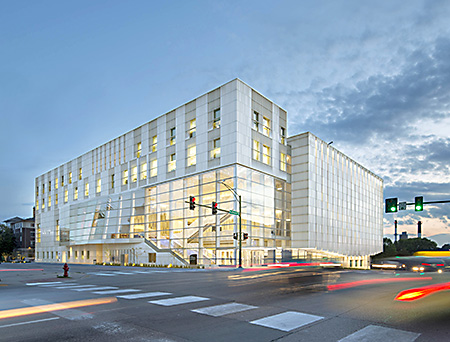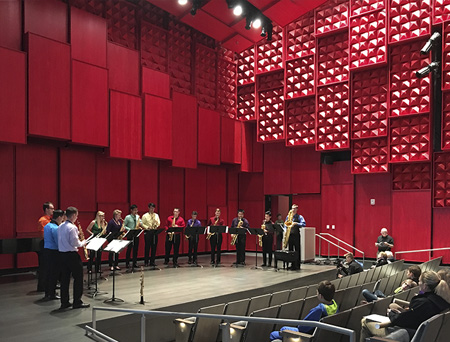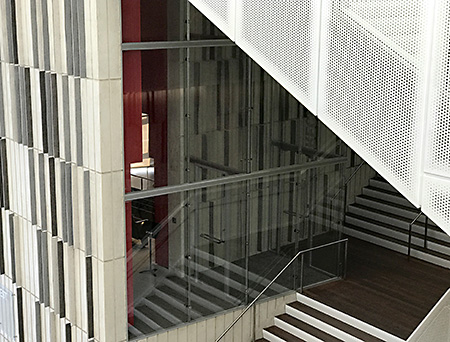Voxman School of Music
University of Iowa, Iowa City
Project History
This project provides a new 188,000 square foot home for the University Of Iowa School Of Music after the previous building was destroyed by flood in 2008. The project includes a 700-seat concert hall, 200-seat recital hall, rehearsal rooms, organ rooms, classrooms, practice rooms, music library, and faculty studios.
Acoustic Design
As a school of music encompassing both performance and rehearsal spaces, acoustic requirements drove much of the design across all disciplines. Special vibration isolation, sound attenuators and careful detailing for sealing penetrations of acoustically sensitive construction were incorporated into all aspects of mechanical and electrical systems design.
Sensitive musical instruments including six pipe organs and 150 pianos (including 57 grand pianos) required design for precise temperature and humidity control. When coupled with the extreme winters and summers of the Iowa climate, this proved a challenge for both the HVAC and building envelope design.
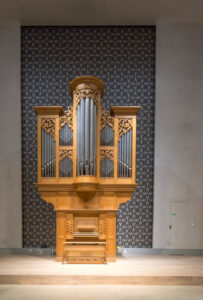
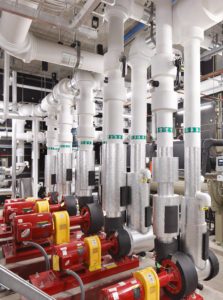



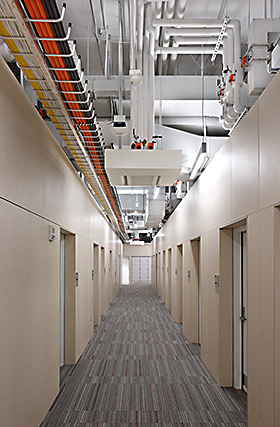
Project Team:
Architect: LMN Architects, Seattle, WA
Architect of Record: Neumann-Monson, Iowa City, IA
Structural Engineers: MKA, Seattle, WA
MEP: Design Engineers, Cedar Rapids, IA
Civil Engineers: Shive-Hattery, Iowa City, IA
Landscape Architect: Confluence, Iowa City, IA
Cost Estimator: RLB, Phoenix, AZ
Acoustics & A/V: Jaffe Holden, Norwalk, CT
Theater: Fischer Dachs Associates, New York, NY
Lighting Designer: Horton Lees Brogden Lighting Design, Los Angeles, CA
Energy Analysis: The Weidt Group, Minnetonka, MN
Code Consultant: T.A Kinsman Consulting, Seattle, WA
Vertical Transportation: Lerch Bates, Minneapolis, MN
Organ Designer: Orgelbau Klais Bonn, Bonn, Germany
CFD Modeling: Price Industries, Winnipeg, Manitoba
Fire Protection Analysis: Summit Fire Consulting, Minneapolis, MN
Commissioning: Sebesta Blomberg, Cedar Rapids, IA
Construction Manager: Mortenson Construction, Minneapolis, MN
The HVAC design includes multiple distribution system types, each tailored to the unique needs of the space it serves. Single zone displacement ventilation systems serve the 200-seat performance hall, rehearsal rooms, and organ rooms, and a multi-zone displacement ventilation system serves the 700-seat concert hall. These rooms are all large volume spaces with high ceilings and critical acoustic Variable Air Volume (VAV) boxes were used for the lobbies and circulation spaces throughout the building, supplemented with perimeter radiant floor heating in areas where people were likely to congregate. The radiant floor is also used for radiant cooling to absorb direct solar energy that enters the lobbies from the large eastern-facing curtain wall glazing system. Energy recovery units utilize enthalpy wheels to pretreat the required outdoor air for the building. Dual wheel energy recovery units were used to provide very dry air to control humidity and to help ensure that condensation doesn’t occur at the chilled beam terminal cooling coils. The fire alarm system provides voice notification throughout the facility and is integrated with a clean agent releasing panel and a dry sprinkler system. Several rooms in the building are equipped with an air sampling system for early smoke detection. Electrical System Design An extensive sub-metering system was provided to meter general use lighting, individual theatrical lighting per theatre, plug loads and HVAC loads. These meters have been designed to integrate with temperature controls for logging and trending energy usage. This allows the Owner to determine where energy savings can be captured as well as help identify if a system is not working as intended. Lighting Design As a design concept, there was a desire to light the main staircases through the building in an inviting way. Color-changing LED projection fixtures were installed to light the path of travel and lead occupants into the building. These fixtures also serve as a way to highlight the building for special events, such as they can be programmed to a pink hue for breast cancer awareness or could be adjusted to a blue for a special jazz performance. The theatrical spaces were designed with large capacity plug boxes for connection of theatrical light fixtures. This design is extremely flexible to accommodate traveling shows as well as serve the University for normal day-to-day events. The lighting control system is an addressable system with a graphical user interface. Much of the floor plan was designed to allow natural light to flow through the building, light fixtures that fall within these zones are controlled for automatically dimming to the natural light available. Not only does this system allow the Owner to reduce light levels during periods of high natural light, it also allows them to adjust the full output level of the fixtures to ensure that no space is over lit. For periods of load shedding, the lighting in the building can be incrementally dimmed without affecting the occupants to save energy. Download the Project Case Study: Awards 2013 Architizer
The project features very high goals for energy efficiency. Overall, the building is projected to use 69% less energy than a minimally code compliant building. The building’s six-story atrium winds through the building, and a large east-facing glass façade required special attention and coordination during the design process. Due to the complex geometry of the spaces and unique application of some of the systems, computational fluid dynamics (CFD) models were used to fine tune the air distribution design. Revit and Navisworks software programs were used extensively for modeling the complex building and for clash detection.
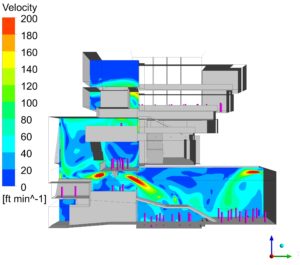 HVAC Design
HVAC Design
One of the unique features of the project is its heating system. All of the heat required for the building is provided by harvesting waste heat from the building’s core and from other the campus buildings. Heat recovery chillers are used to extract heat from the campus chilled water system. A byproduct of this process is chilled water which is returned to the campus chilled water loop which in turn allows it to be used in other buildings.
requirements, the type of room ideally suited to displacement ventilation because this system supplies air at a low velocity which is very quiet and only conditions the occupied zone closest to the floor, reducing the amount to be conditioned as well as reducing the outdoor air required for ventilation. The multi-zone system takes this one step farther to only supply air to the part of the room that is being occupied, such as during a rehearsal on stage or a smaller performance. Perimeter heating, where required, was accomplished using radiant floors. Four-pipe active chilled beams were used for the faculty studios, libraries, practice rooms, and classrooms. Due to the ability to induce and condition air that is already in the room, these units require very little airflow from a central air handling unit, which results in very quiet air diffusion in the rooms. This system also allows for the individual control of each room.
Four-pipe active chilled beams were used for the faculty studios, libraries, practice rooms, and classrooms. Due to the ability to induce and condition air that is already in the room, these units require very little airflow from a central air handling unit, which results in very quiet air diffusion in the rooms. This system also allows for the individual control of each room.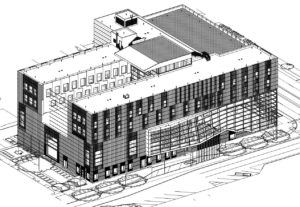 Fire System Design
Fire System Design
The building contains several specialty and custom ceiling systems to reflect and absorb sound which made sprinkler coverage a challenge. Working with the architects and specialty fire protection consultant, an alternate design was approved by the State of Iowa for several areas in the building. In addition, the project includes both a clean agent suppression system for the rare book room as well as a pre-action sprinkler system for the main organ in the concert hall to protect these high-value items.
The electrical distribution was designed to mitigate arc-flash hazard ratings. SKM, a power systems modeling software, was used to conduct multiple preliminary studies to determine the most effective. The system is a 3200A, 277/480V service with K-rated transformers for stepping down to 120/208V panel boards. Four separate special audio/video distribution systems with isolated grounds were designed for the sensitive audio video systems. Separate distribution branches were designed for the theatrical lighting systems to isolate those loads from other loads in the building. The distribution system also includes a natural gas generator for emergency systems within the building.
The lighting design includes unique applications and distinctive installation details for standard products that provide a custom appearance. Lighting power densities were reduced to 30% below current energy standards and still met the minimum lighting requirements of IESNA. Many fixtures in the building utilize LED technology, for their reduced wattage capability and their long life. Special attention was given to fixture maintenance to assure fixtures are accessible in the future and repairable.![]() University of Iowa School of Music
University of Iowa School of Music
2017 AIA Washington Council – Civic Design Honor Award
Architecture + Sound, Finalist
Architecture + Modeling, Jury Choice
Architecture + Fab, Popular Choice
Architecture + Modeling, Popular Choice


